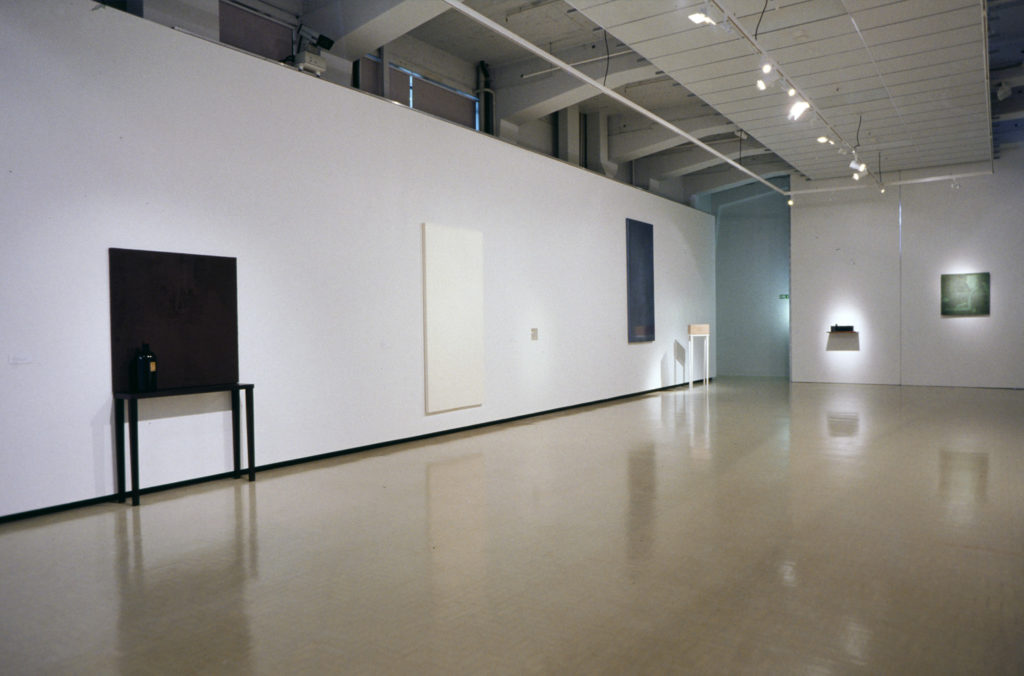CURATOR Gregory Burke OTHER VENUES Waikato Museum of Art and History, Hamilton [date] SPONSOR Queen Elizabeth II Arts Council of New Zealand PUBLICATION essays Gregory Burke, Carol D Schwartz, Jane Rankin-Reid
Susan Norrie develops this elegant but obscure exhibition during a three-month Gallery residency. The Sydney-based artist is known as a painter, but here she combines painting with sculpture and installation.
The cycle of works starts with Model Two (referring to breath) and ends with Model Seven (referring to funerary procedure). Norrie calls Model Two a ‘breath box’. Standing on four white, tall, thin wooden legs, the beige box has clusters of holes drilled into each of its side to help whatever may be inside to breathe. Model Seven (1993) describes what happens to your body after you stop breathing. Each of the seven canvases reproduces a guide for embalming.
Norrie's works are laden with art-history references. Her painting Model One/Chardin Study II (1993) reproduces Jean Simeon Chardin’s painting Boy with a Top. Next to it, Model Four (1993) is a lacquered shelf with a replica spinning top and an eye bath. In Model Four, the playful top from Model One is transformed into a sharp, threatening object pointed at the eye bath; its dark opacity contrasting with the transparent, light eye bath.
There are monochrome paintings. Installment One and Installment Two are rich burgundy, like dried blood. Installment Three is creamy white, like pale skin. Installment Six is royal blue. You can lose yourself in these large colour fields. Some of the paintings are accompanied by objects: Installment One by a bronchial bottle and table, Installment Two by a punching bag. Gregory Burke tells the Waikato Times, ‘Those who know the artist and her work can dig deeper and appreciate the theories behind these.’
Norris tells Capital Times, Room for Error is ‘to do with the end of the millennium where there are not just changes in social and psychological structures. The body and the mind changes as well—there’s the issue of AIDS and viruses. We’ve become more aware of bodies and what can happen.’























